New #GlobalSharkTrends study published in @ScienceMagazine reveals that #overfishing has more than halved shark & ray populations over the past 50-years causing widespread erosion of ecological function and exceptionally high extinction risk
👉🏽Full article
Please SHARE & LIKE
🧵1/20bit.ly/GlobalSharkTre…
👉🏽Full article
Please SHARE & LIKE
🧵1/20bit.ly/GlobalSharkTre…
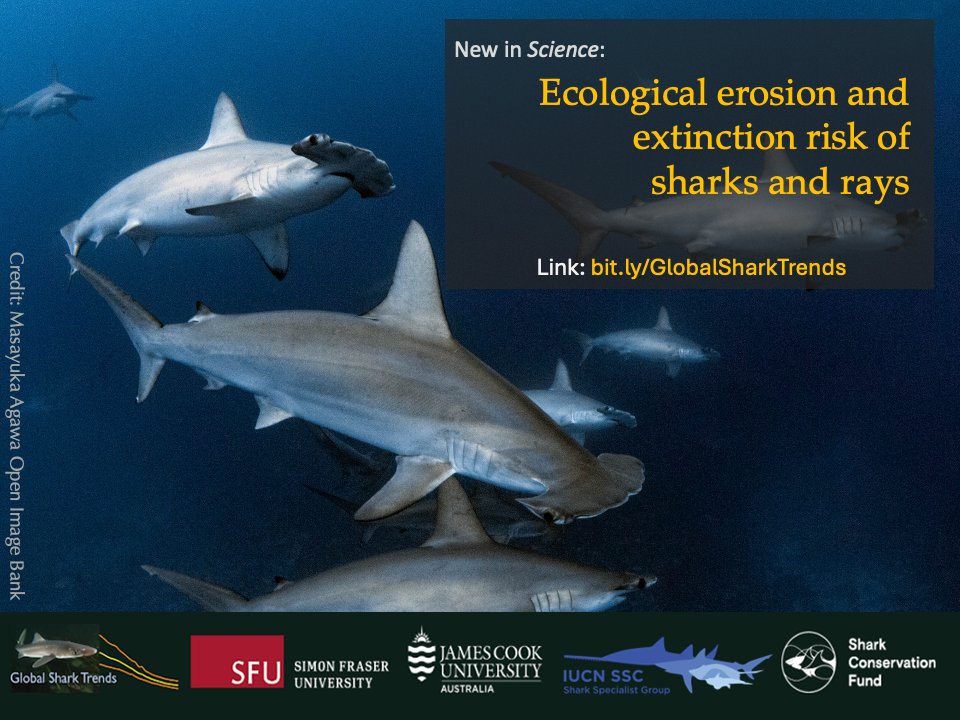
New #GlobalSharkTrends analysis funded by @SharkRayFund serves as a #wakeupcall for urgent action to turn the tide for these extraordinary animals:
🧵2/20
#EndOverfishing
#SustainableDevelopmentGoals bit.ly/GlobalSharkTre…
🧵2/20
#EndOverfishing
#SustainableDevelopmentGoals bit.ly/GlobalSharkTre…
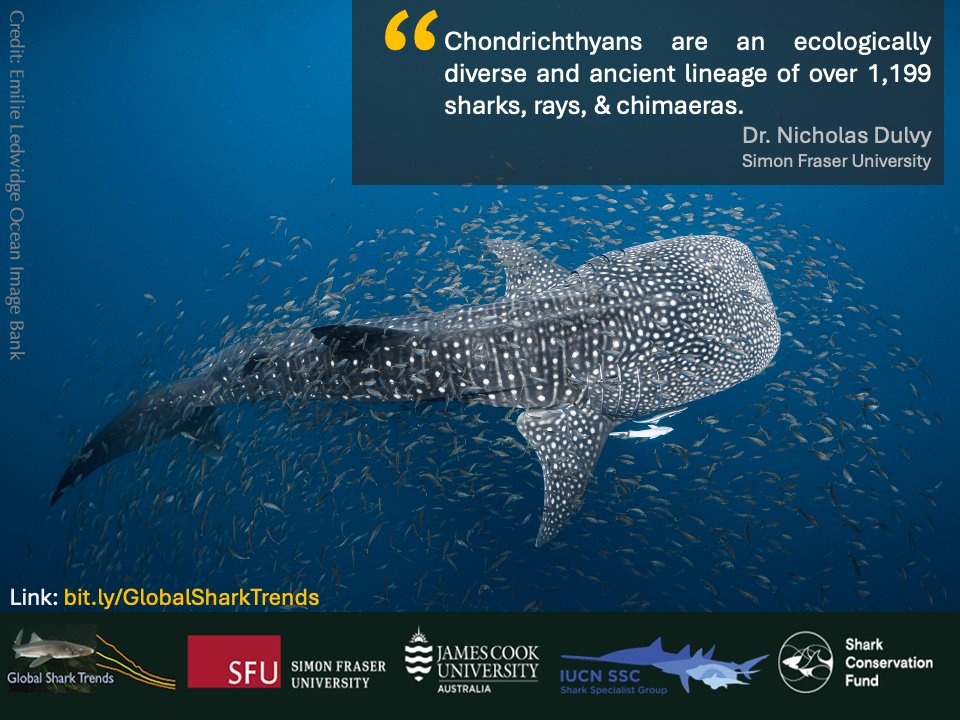
Chondrichthyans are an ecologically diverse and ancient lineage of over 1,199 fishes that occur in a wide range of estuarine, marine, and
even some freshwater habitats, dominating the higher trophic levels at the top of ecological pyramids
#SharkScience
#GlobalSharkTrends
🧵3/20
even some freshwater habitats, dominating the higher trophic levels at the top of ecological pyramids
#SharkScience
#GlobalSharkTrends
🧵3/20

Overfishing has halved populations of the chondrichthyan fishes – sharks, rays, and chimaeras – since 1970. Target fisheries and incidental capture (bycatch), in particular, has resulted in over one-third threatened with extinction.
#GlobalSharkTrends
🧵4/20
#EndOverfishing
#SustainableDevelopmentGoals
#GlobalSharkTrends
🧵4/20
#EndOverfishing
#SustainableDevelopmentGoals

The Red List Index (RLI) is based on the @IUCNSSC @SSCmarine @IUCNRedList assessments and is widely used to report on the status of terrestrial biodiversity and the effectiveness of conservation actions, yet there is no equivalent for the oceans
#GlobalSharkTrends
🧵5/20bit.ly/GlobalSharkTre…
#GlobalSharkTrends
🧵5/20bit.ly/GlobalSharkTre…

New global analysis, experts calculate aquatic Red List Index to track extinction risk for 1,199 sharks, rays & chimaeras from 1970 to 2020.
👉 over 1/3 qualify as Critically Endangered, Endangered, Vulnerable
👉 Red List Index has worsened by 19% since 1970
#GlobalSharkTrends
🧵6/20bit.ly/GlobalSharkTre…
👉 over 1/3 qualify as Critically Endangered, Endangered, Vulnerable
👉 Red List Index has worsened by 19% since 1970
#GlobalSharkTrends
🧵6/20bit.ly/GlobalSharkTre…

#GlobalSharkTrends
Since we wrote the paper @SharkColin coded a mesmerizing GIF of the Red List Index for
sharks, rays & chimaeras
🧵7/20
Since we wrote the paper @SharkColin coded a mesmerizing GIF of the Red List Index for
sharks, rays & chimaeras
🧵7/20
#GlobalSharkTrends
Here is another @SharkColin GIF of Shark & Ray Red List Index by habitat
🧵8/20
Here is another @SharkColin GIF of Shark & Ray Red List Index by habitat
🧵8/20
#GlobalSharkTrends
Steep declines in largest and most functionally important shark and rays species, especially:
➡️ Rhino rays (sawfishes, giant guitarfishes, wedgefishes), devil & eagle rays
➡️ Hammerheads, requiem, angel and gulper sharks.
🧵9/20
Steep declines in largest and most functionally important shark and rays species, especially:
➡️ Rhino rays (sawfishes, giant guitarfishes, wedgefishes), devil & eagle rays
➡️ Hammerheads, requiem, angel and gulper sharks.
🧵9/20

The wave of rising shark and ray extinction risk #GlobalSharkTrends
👉 started in rivers, estuaries, and nearshore coastal waters
👉 before rapidly expanding out across the oceans.
Lower risk only in harder-to-fish nearshore habitats, such as
👉 Kelp/algal reefs
👉 Rocky reefs, and
👉 deepsea
🧵10/20
👉 started in rivers, estuaries, and nearshore coastal waters
👉 before rapidly expanding out across the oceans.
Lower risk only in harder-to-fish nearshore habitats, such as
👉 Kelp/algal reefs
👉 Rocky reefs, and
👉 deepsea
🧵10/20
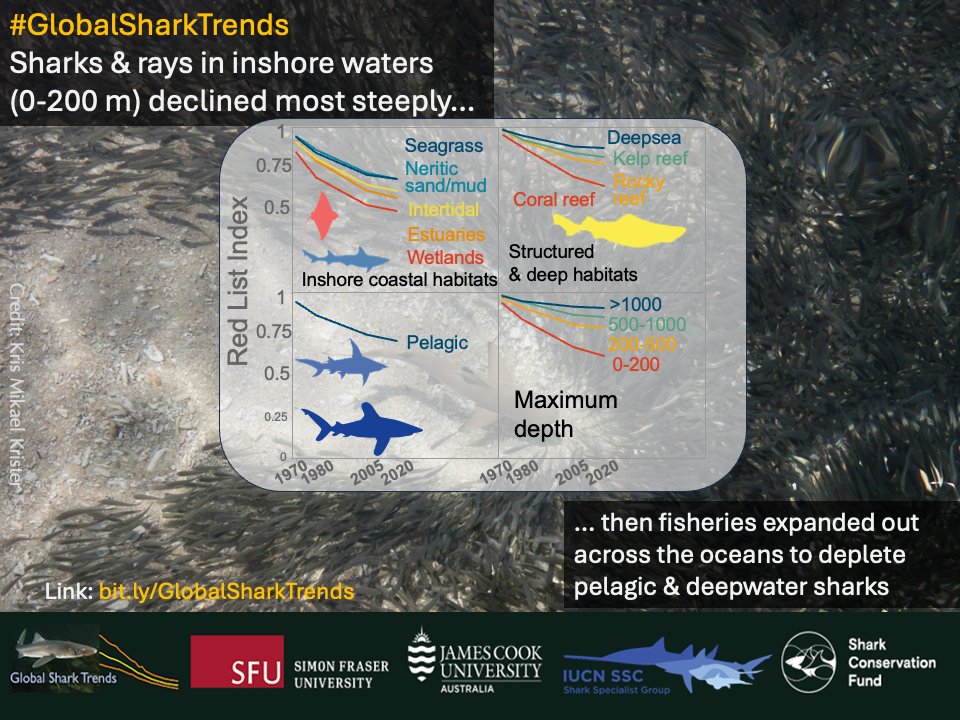
Overfishing of ray & #FlatShark ecomorphotypes:
➡️ rhinobenthic ecomorphotype
composed of guitarfishes and wedgefishes,
➡️ aquilopelagic mollusk-crushing
(durophagous) eagle rays, cownose rays & planktivorous devil rays,
➡️ squatinobenthic angel shark ambush predators
🧵11/20
➡️ rhinobenthic ecomorphotype
composed of guitarfishes and wedgefishes,
➡️ aquilopelagic mollusk-crushing
(durophagous) eagle rays, cownose rays & planktivorous devil rays,
➡️ squatinobenthic angel shark ambush predators
🧵11/20

Overfishing of shark ecomorphotypes
👉 littoral ecomorphotype, including requiem, weasel & hammerhead sharks
👉 macro-oceanic species that formerly dominated the pelagic ocean, notably
mackerel sharks, oceanic whitetip, & silky shark
🧵12/20
👉 littoral ecomorphotype, including requiem, weasel & hammerhead sharks
👉 macro-oceanic species that formerly dominated the pelagic ocean, notably
mackerel sharks, oceanic whitetip, & silky shark
🧵12/20

The current extinction risk trajectory is driving disproportionate (22%) loss of ecological functional diversity of sharks and rays.
science.org/doi/10.1126/sc…
#GlobalSharkTrends
bit.ly/GlobalSharkTre…
🧵13/20
science.org/doi/10.1126/sc…
#GlobalSharkTrends
bit.ly/GlobalSharkTre…
🧵13/20

Researchers highlight troubling dark spots where shark & ray biodiversity is plummeting, w/
👉 steep declines in RLI
👉 high richness & endemicity:
1. Japan–Taiwan
2. Indonesia to New Guinea
3. India & Bay of Bengal
4. Western Indian Ocean
5. SW Atlantic
6. Galapagos & SE Pacific
7. Gulf of California
🧵14/20
👉 steep declines in RLI
👉 high richness & endemicity:
1. Japan–Taiwan
2. Indonesia to New Guinea
3. India & Bay of Bengal
4. Western Indian Ocean
5. SW Atlantic
6. Galapagos & SE Pacific
7. Gulf of California
🧵14/20
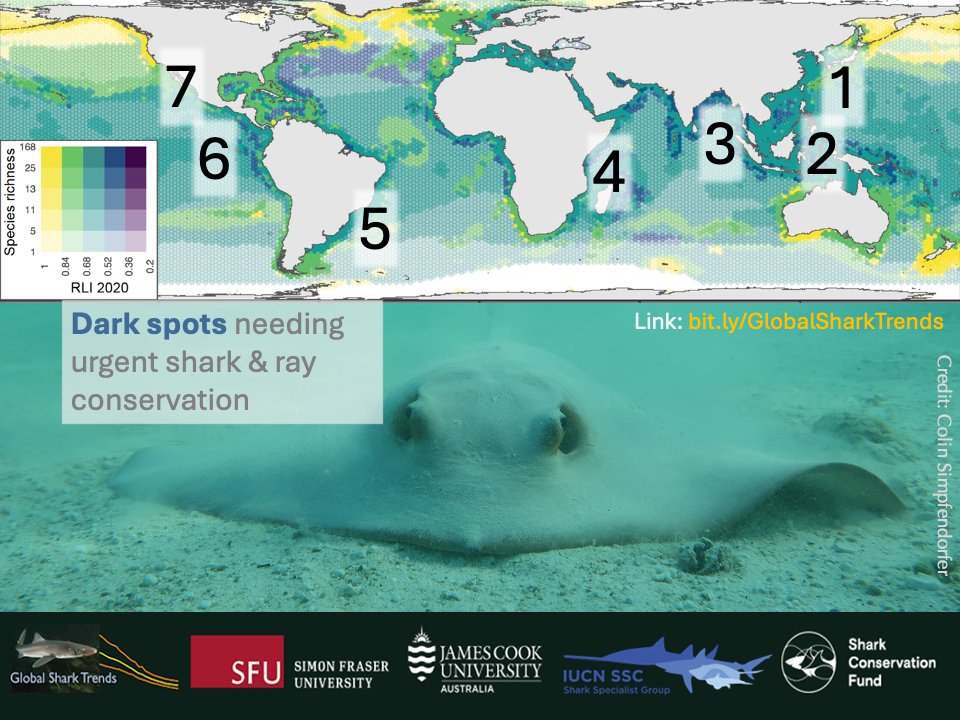
Bright spots with some science-based fisheries management measure benefiting sharks & rays:
1. USA & Canada
2. NE Atlantic
3. S. Africa
4. Australia & New Zealand
#OceanOptimism
🧵15/20
1. USA & Canada
2. NE Atlantic
3. S. Africa
4. Australia & New Zealand
#OceanOptimism
🧵15/20

We developed a national RLI and found ecology is important. Countries with healthier Shark & Ray populations (larger RLI), have:
👉 greater shelf area (more habitat)
👉 cooler sea surface temperature
👉 greater primary production
This is consistent with greater extinction risk in the tropics
🧵16/20
👉 greater shelf area (more habitat)
👉 cooler sea surface temperature
👉 greater primary production
This is consistent with greater extinction risk in the tropics
🧵16/20

Brightspot countries for shark and ray conservation have:
👉 high catch-per-unit-effort
👉 fisheries subsidies that do not promote overfishing
👉 stronger governance
#OceanOptimism
17/20 science.org/doi/10.1126/sc…
👉 high catch-per-unit-effort
👉 fisheries subsidies that do not promote overfishing
👉 stronger governance
#OceanOptimism
17/20 science.org/doi/10.1126/sc…

Sharks, rays & chimaeras play important roles in marine ecosystems. Their decline could affect ocean health, highlighting the need for ongoing conservation efforts to support their recovery.
#OceanOptimism
🧵17/20 bit.ly/GlobalSharkTre…
#OceanOptimism
🧵17/20 bit.ly/GlobalSharkTre…

The decline and loss of sharks & rays is a key example of how overfishing is eroding marine biodiversity. Stronger fisheries management is needed to ensure ocean biodiversity & socioeconomic sustainability.
#OceanOptimism
🧵18/20 science.org/doi/10.1126/sc…
#OceanOptimism
🧵18/20 science.org/doi/10.1126/sc…
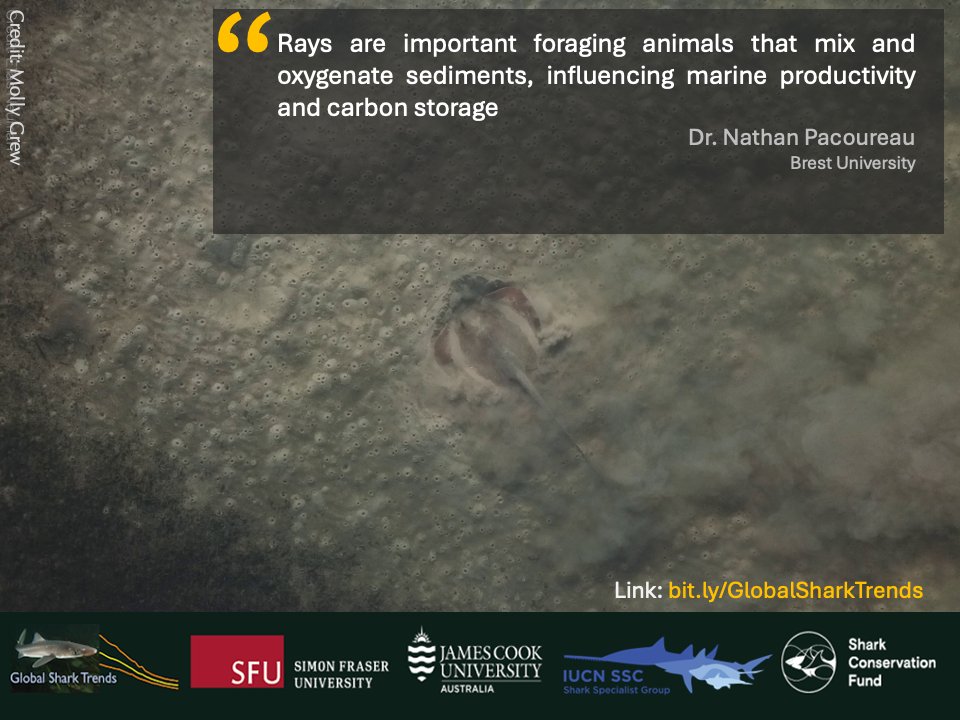
The Shark & Ray Red List Index is the first truly global index of the effects of fisheries harvest on biodiversity & sustainability
#SustainableFisheries
🧵19/20 science.org/doi/10.1126/sc…
#SustainableFisheries
🧵19/20 science.org/doi/10.1126/sc…

We urge the adoption of the Shark & Ray Red List Index to track progress on ocean conservation goals, like the Global #Biodiversity Framework Target 5 and #SustainableDevelopmentGoal 14.4. Accountability is key for preserving marine life!
science.org/doi/10.1126/sc…
🧵20/20 🦈
#GlobalGoals #UNGA #SDG
#SustainableDevelopmentGoals #SDG
Please REPOST & LIKE
science.org/doi/10.1126/sc…
🧵20/20 🦈
#GlobalGoals #UNGA #SDG
#SustainableDevelopmentGoals #SDG
Please REPOST & LIKE

• • •
Missing some Tweet in this thread? You can try to
force a refresh







